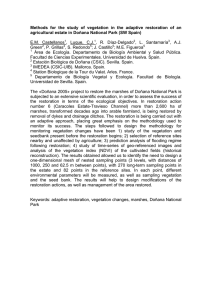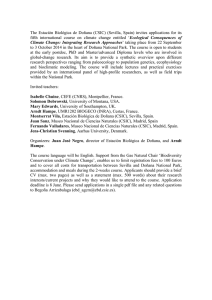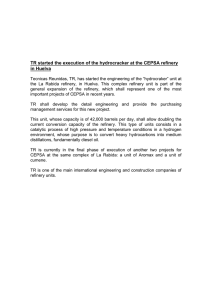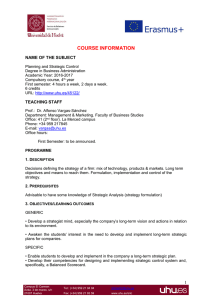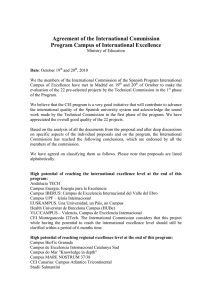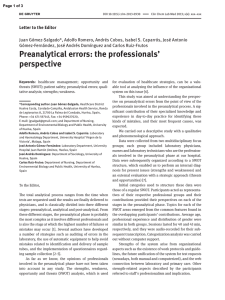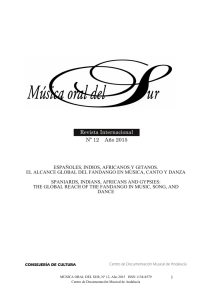emer-‐pt070 assessment of pollution issues in doñana national park b
Anuncio
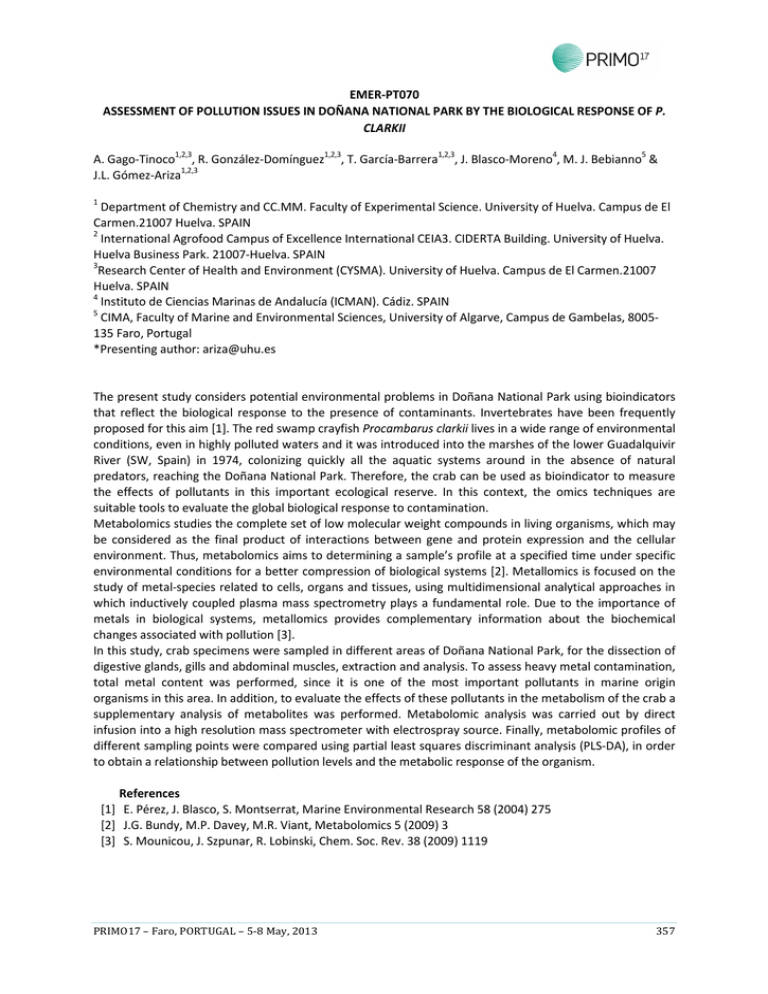
EMER-­‐PT070 ASSESSMENT OF POLLUTION ISSUES IN DOÑANA NATIONAL PARK BY THE BIOLOGICAL RESPONSE OF P. CLARKII A. Gago-­‐Tinoco1,2,3, R. González-­‐Domínguez1,2,3, T. García-­‐Barrera1,2,3, J. Blasco-­‐Moreno4, M. J. Bebianno5 & J.L. Gómez-­‐Ariza1,2,3 1 Department of Chemistry and CC.MM. Faculty of Experimental Science. University of Huelva. Campus de El Carmen.21007 Huelva. SPAIN 2 International Agrofood Campus of Excellence International CEIA3. CIDERTA Building. University of Huelva. Huelva Business Park. 21007-­‐Huelva. SPAIN 3 Research Center of Health and Environment (CYSMA). University of Huelva. Campus de El Carmen.21007 Huelva. SPAIN 4 Instituto de Ciencias Marinas de Andalucía (ICMAN). Cádiz. SPAIN 5 CIMA, Faculty of Marine and Environmental Sciences, University of Algarve, Campus de Gambelas, 8005-­‐ 135 Faro, Portugal *Presenting author: ariza@uhu.es The present study considers potential environmental problems in Doñana National Park using bioindicators that reflect the biological response to the presence of contaminants. Invertebrates have been frequently proposed for this aim [1]. The red swamp crayfish Procambarus clarkii lives in a wide range of environmental conditions, even in highly polluted waters and it was introduced into the marshes of the lower Guadalquivir River (SW, Spain) in 1974, colonizing quickly all the aquatic systems around in the absence of natural predators, reaching the Doñana National Park. Therefore, the crab can be used as bioindicator to measure the effects of pollutants in this important ecological reserve. In this context, the omics techniques are suitable tools to evaluate the global biological response to contamination. Metabolomics studies the complete set of low molecular weight compounds in living organisms, which may be considered as the final product of interactions between gene and protein expression and the cellular environment. Thus, metabolomics aims to determining a sample’s profile at a specified time under specific environmental conditions for a better compression of biological systems [2]. Metallomics is focused on the study of metal-­‐species related to cells, organs and tissues, using multidimensional analytical approaches in which inductively coupled plasma mass spectrometry plays a fundamental role. Due to the importance of metals in biological systems, metallomics provides complementary information about the biochemical changes associated with pollution [3]. In this study, crab specimens were sampled in different areas of Doñana National Park, for the dissection of digestive glands, gills and abdominal muscles, extraction and analysis. To assess heavy metal contamination, total metal content was performed, since it is one of the most important pollutants in marine origin organisms in this area. In addition, to evaluate the effects of these pollutants in the metabolism of the crab a supplementary analysis of metabolites was performed. Metabolomic analysis was carried out by direct infusion into a high resolution mass spectrometer with electrospray source. Finally, metabolomic profiles of different sampling points were compared using partial least squares discriminant analysis (PLS-­‐DA), in order to obtain a relationship between pollution levels and the metabolic response of the organism. References [1] E. Pérez, J. Blasco, S. Montserrat, Marine Environmental Research 58 (2004) 275 [2] J.G. Bundy, M.P. Davey, M.R. Viant, Metabolomics 5 (2009) 3 [3] S. Mounicou, J. Szpunar, R. Lobinski, Chem. Soc. Rev. 38 (2009) 1119 PRIMO17 – Faro, PORTUGAL – 5-­‐8 May, 2013 357
